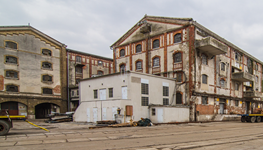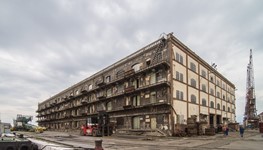Search result

The complex Metropolis
The complex of five port warehouses, which are aligned in two rows along the coast in the far western part of the free customs area, was named Metropolis by the conservators because its theatrics and the apposition of overhead passages are reminiscent of the scenery of the famous science fiction film directed by Fritz Lang. The complex was built between 1909 and 1913 according to plans of the Hungarian engineers Wahler and Rolberitz. The warehouses were built by combining reinforced concrete str ...

Warehouse no. 17
Warehouse no. 17 was built on the former Mary Valerius Pier, known today as Visin Pier. It was planned by the Hungarian architect Ferenc Pfaff who was hired by the Hungarian State Railways. The construction took place between 1906 and 1909. The monumental building was designed with a rectangular door and tracks for railway cars which were passing through the centre of the ground floor, above which there are three more storeys. Besides historicist elements visible in the construction of the port ...

The port warehouses no. 13 and 15
The incentive for the development of trade and navigation in the waters of the Gulf of Kvarner came from Charles VI in 1719, when he issued a decree that the city of Rijeka was to be considered a free port. In 1779, Rijeka was annexed by the Kingdom of Hungary. The construction of adequate roads started to connect the port to the hinterland. Those were the beginnings of the development of Rijeka’s harbour and the Monarchy’s investment of capital into the city upon its recognition of ...
